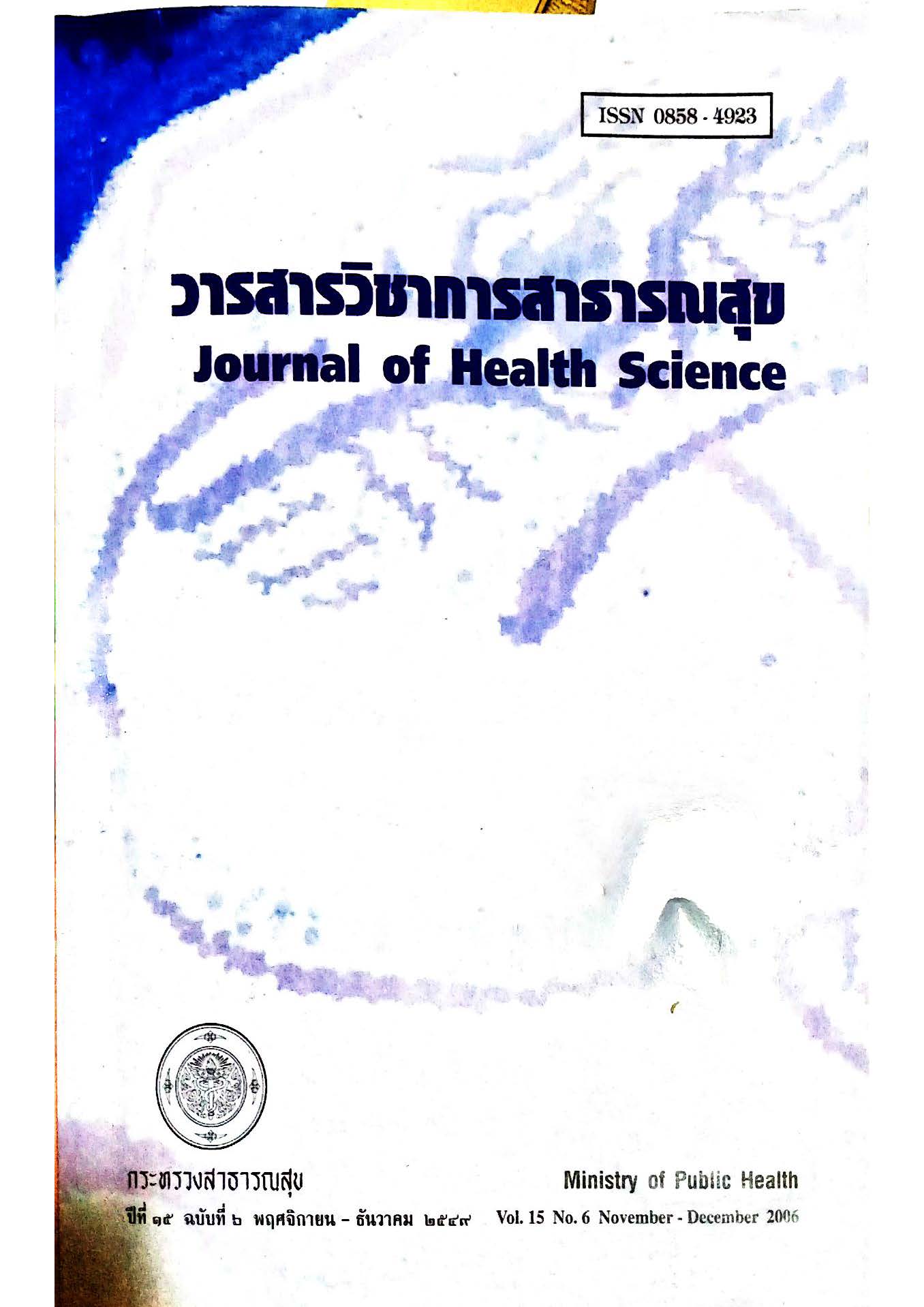Survival of HIV-infected Patients in the North of Thailand Enrolled on National Antiretroviral Program
Keywords:
AIDS, Thailand, survival analysis, antiretroviralAbstract
To describe the survival and determine risk factors for survival of HIV-infected patients enrolled on Thai National Antiretroviral Program during the first 12 months of initiating ARV, a cohort of 647 patients, enrolled in the lower north of Thailand between November 2002 and December 2003, was analysed. The median age of patients was 33 years and 55 percent were women. At the time of starting HAART (highly active antiretroviral therapy), the median baseline CD4 cell count was 40 cells/mm3 and more than half of patients had AIDS. Most patients (98 percent) started on first-line antiretroviral regimen of Stavudine, Lamivudine and Nevirapine. At 12 months after initiation of the therapy, of the 647 patients who contributed 573.9 person-years of follow up, 55 patients died accounting for a mortality rate of 9.6 per 100 person-years and first year survival probability of 91 percent. In the univariate analysis, CD4 at baseline, body weight at baseline and clinical staging were associated with survival. In multivariate analysis, CD4 at baseline, body weight at baseline and sex were associated with survival, however interaction of CD4 -body weight at baseline and possible interaction between body weight at baseline and sex were reported. Survival probability at one year was not different from other studies in developing countries, yet lower than those reported in developed countries. CD4 cell count was the strong predictor of survival. Low body weight at starting ARV was also strongly associated with increased mortality and its effect became more significant in group of low CD4 cell count.
Downloads
Downloads
Published
How to Cite
Issue
Section
License

This work is licensed under a Creative Commons Attribution-NonCommercial-NoDerivatives 4.0 International License.







